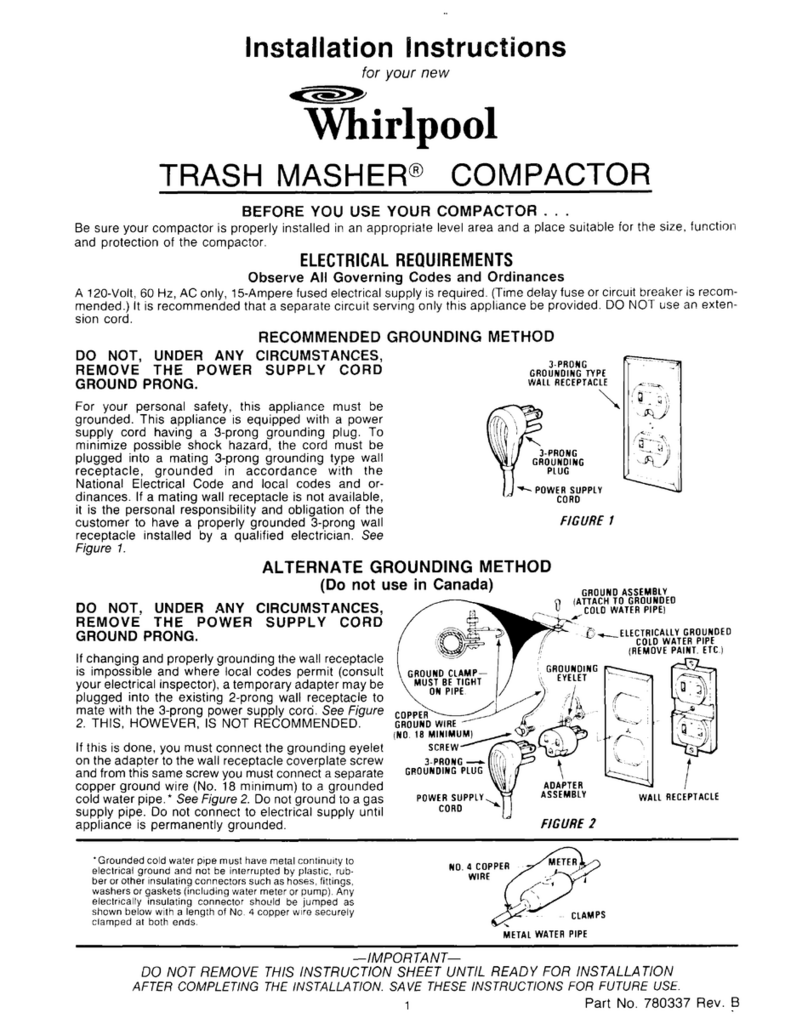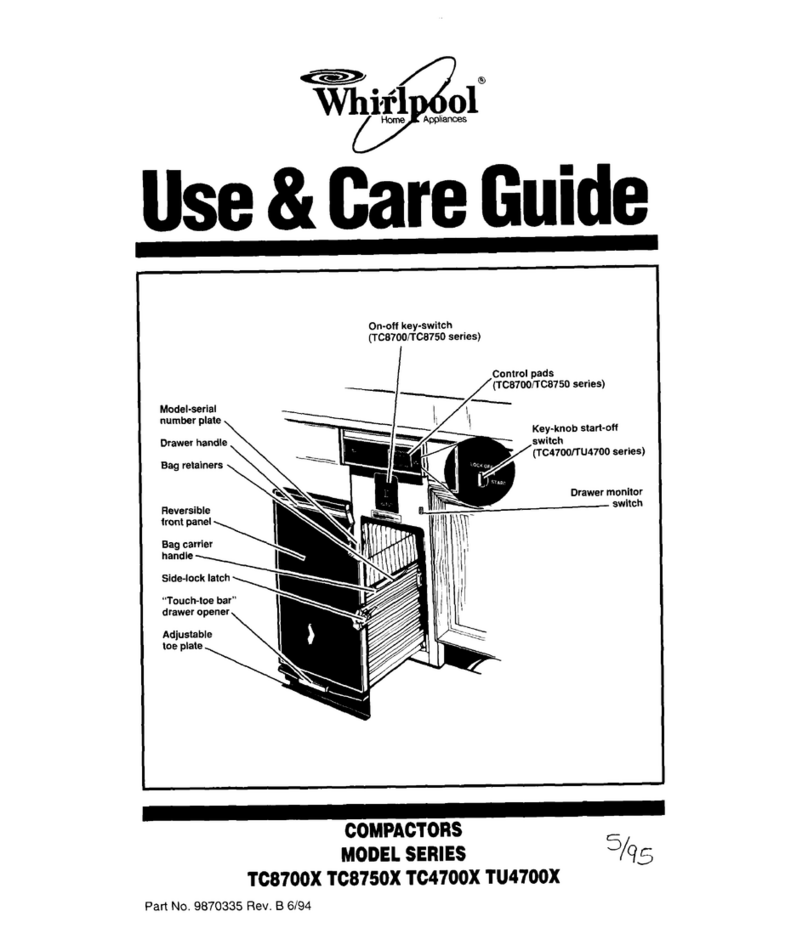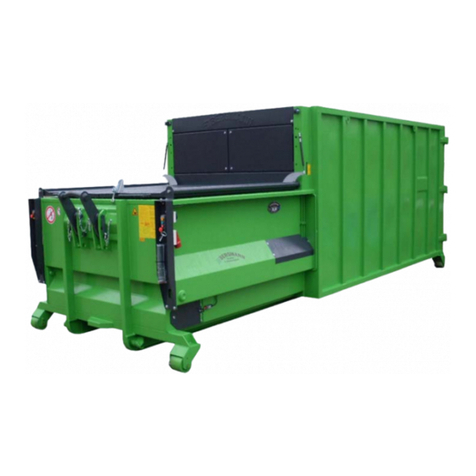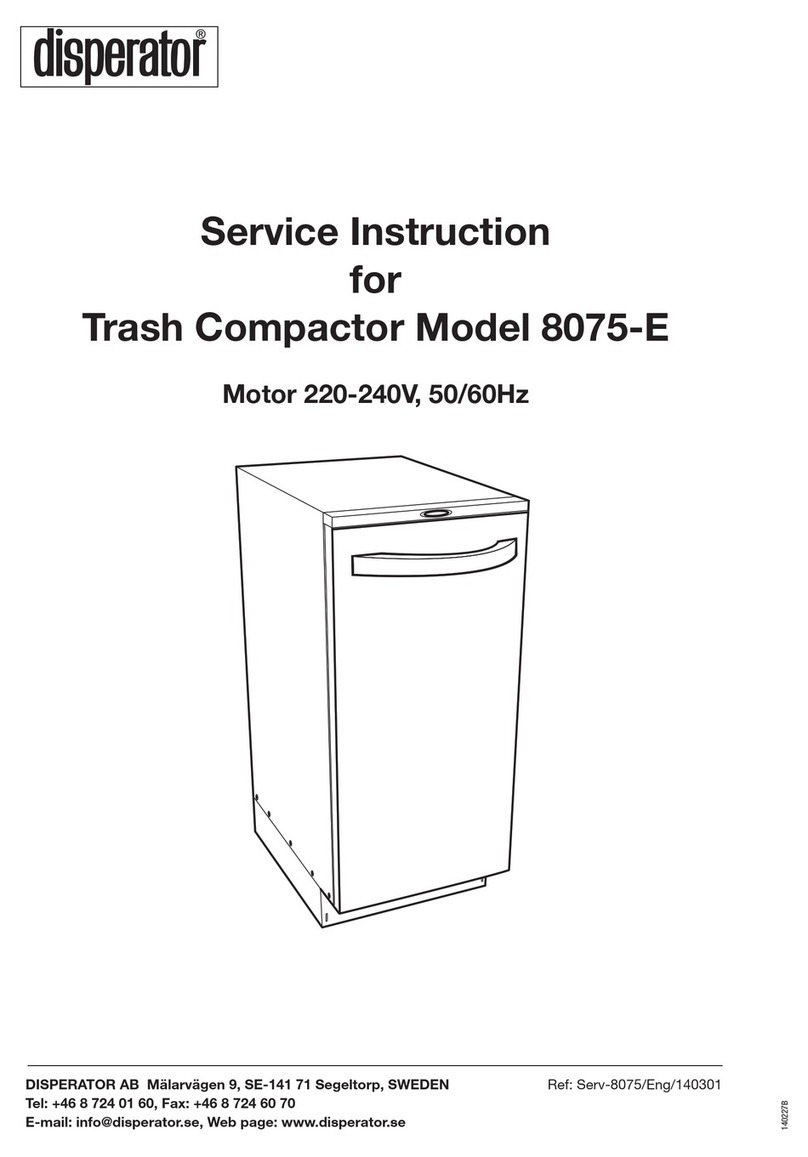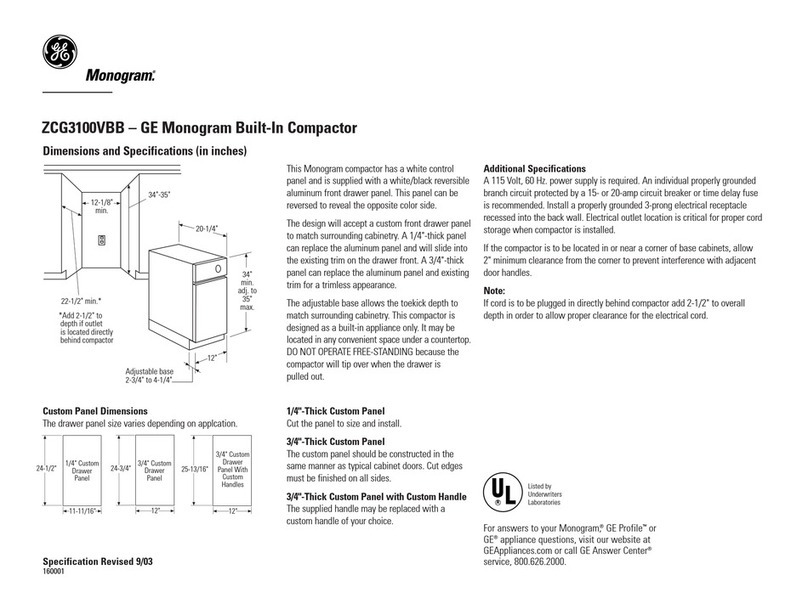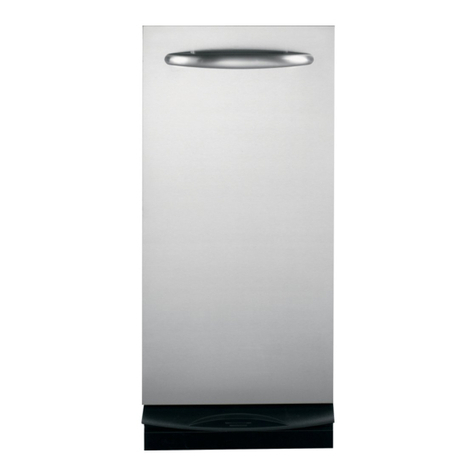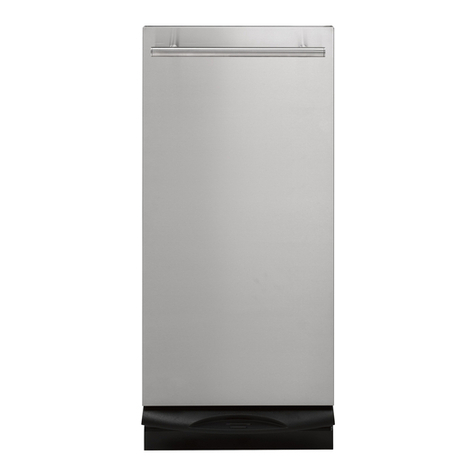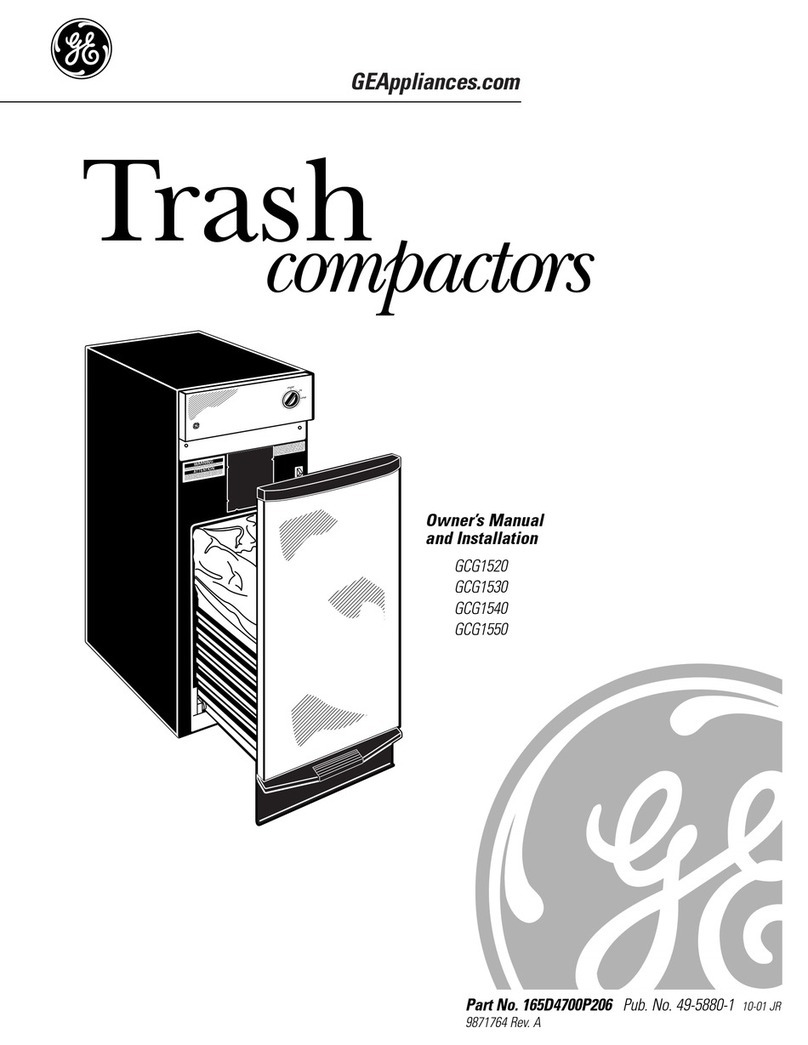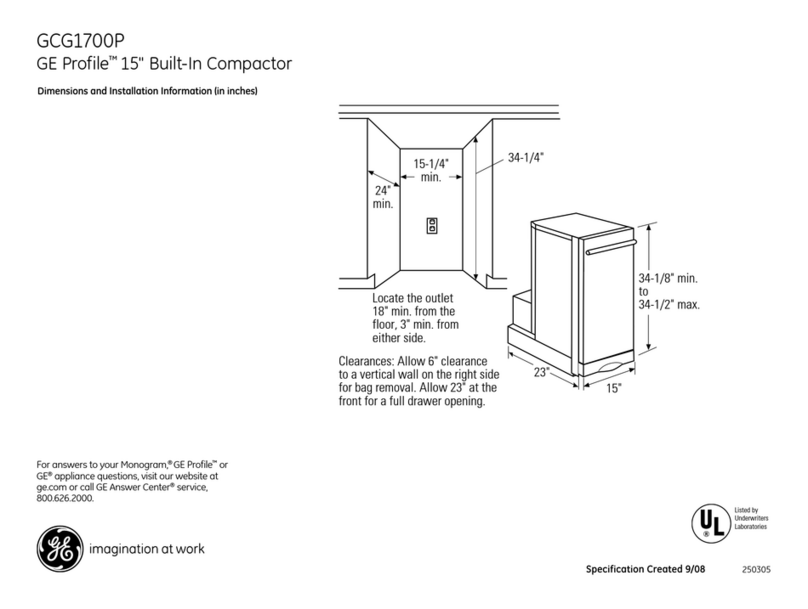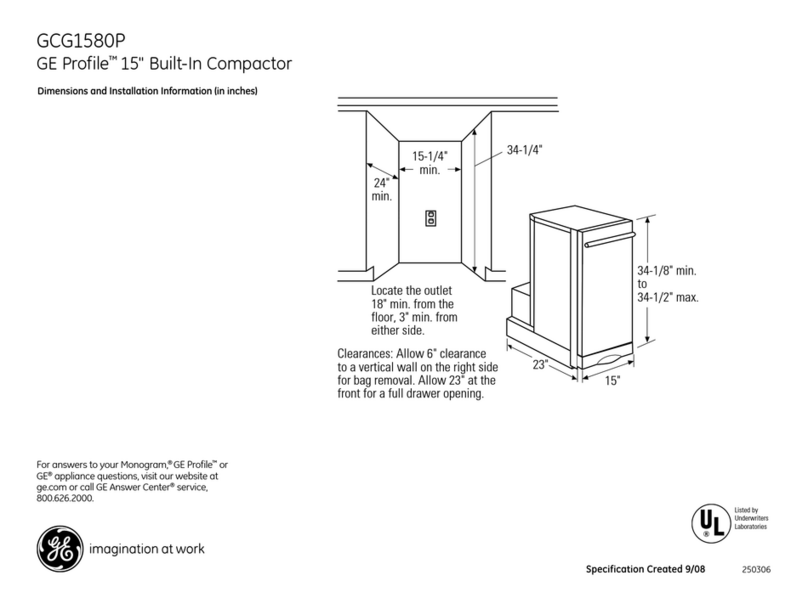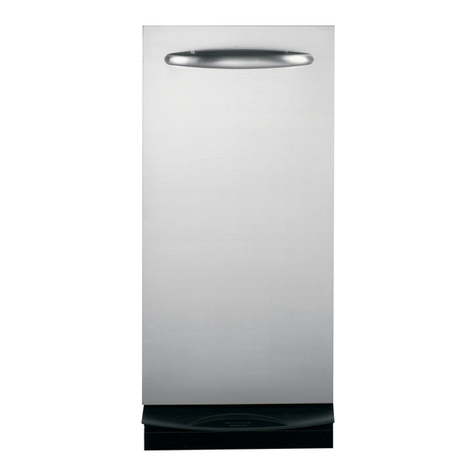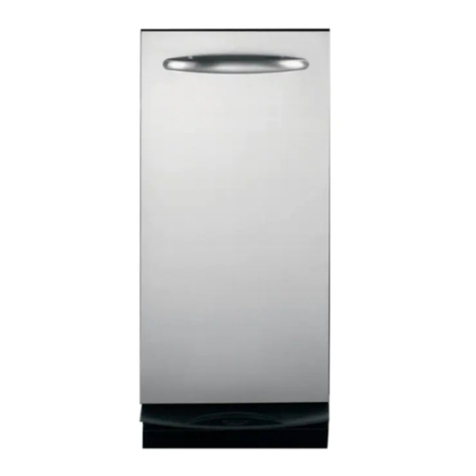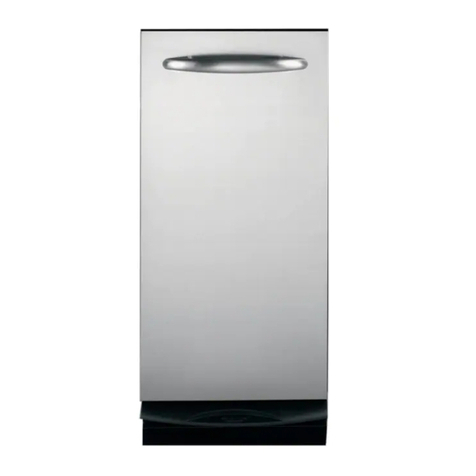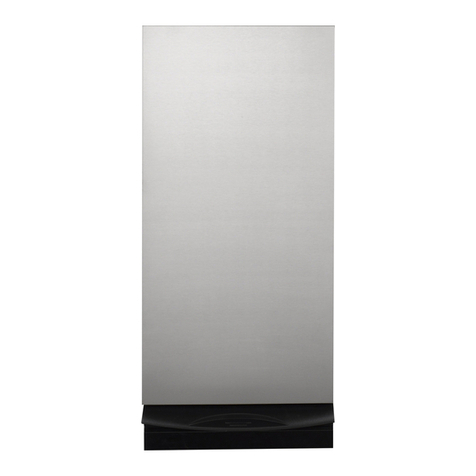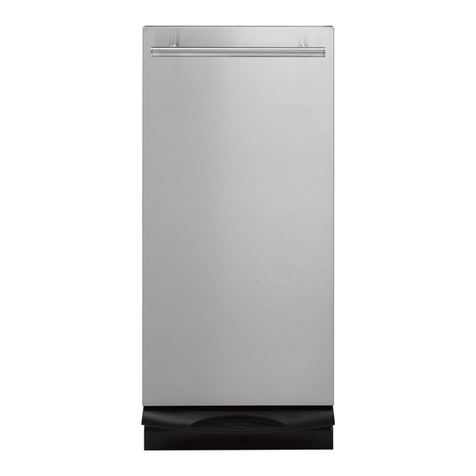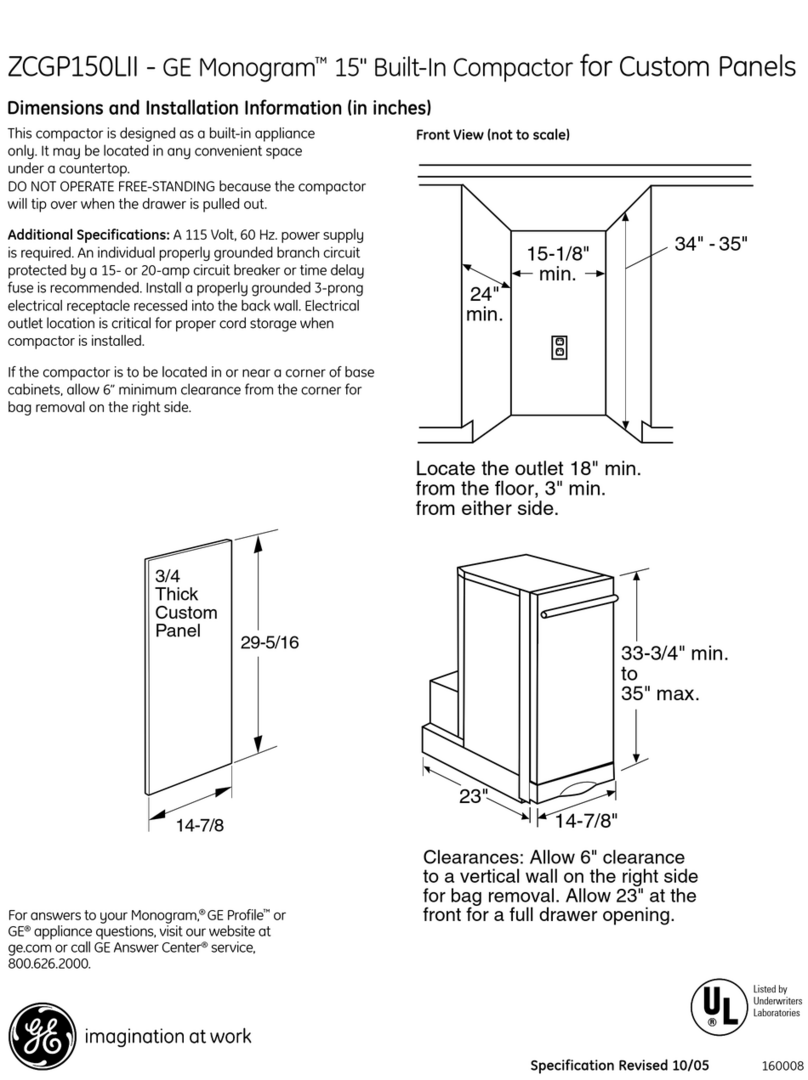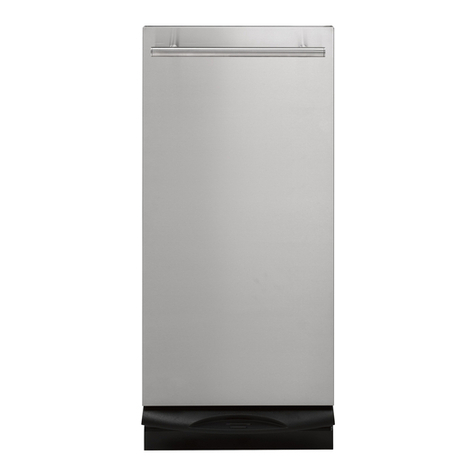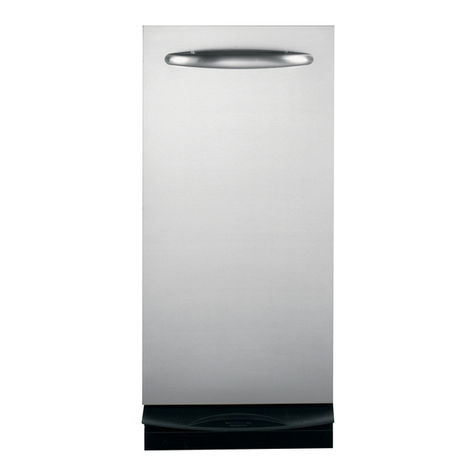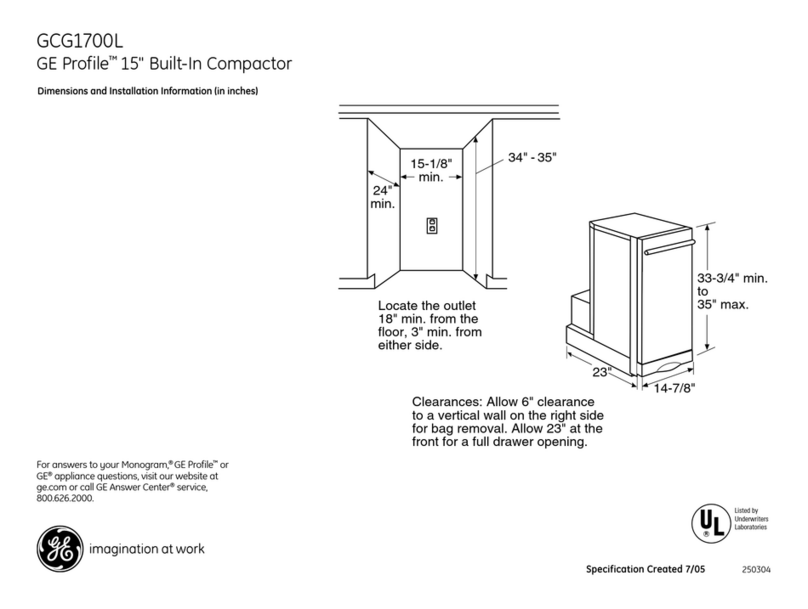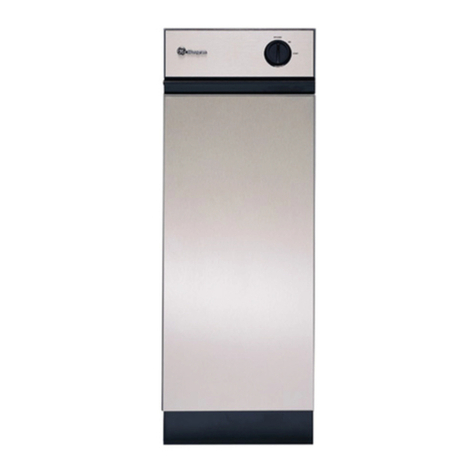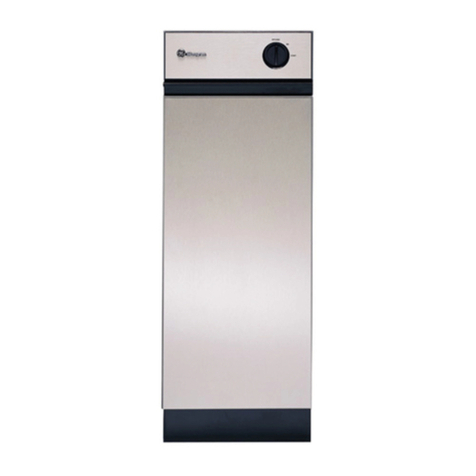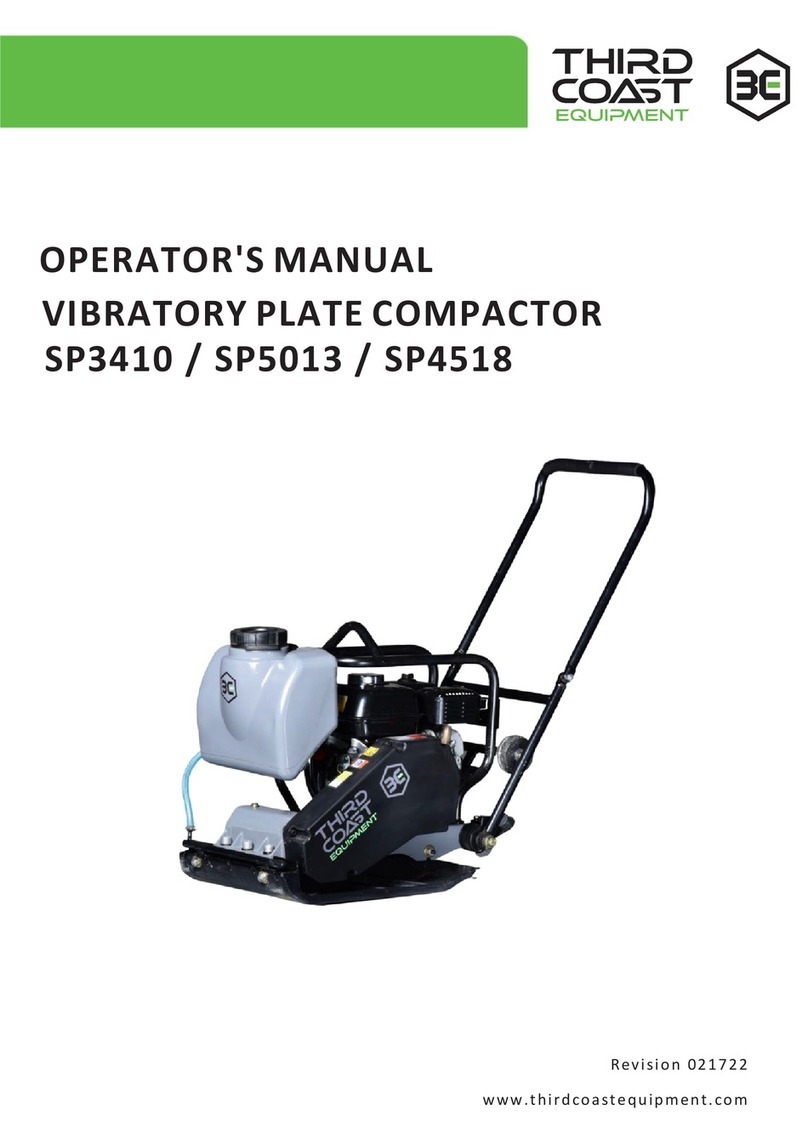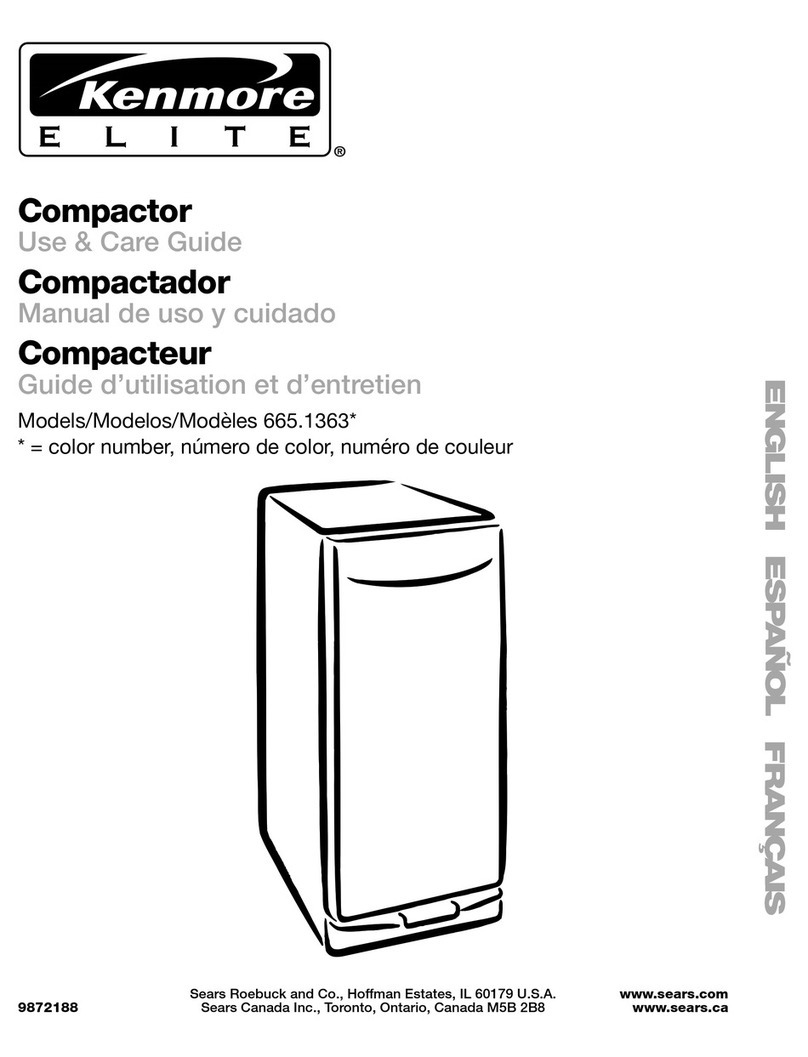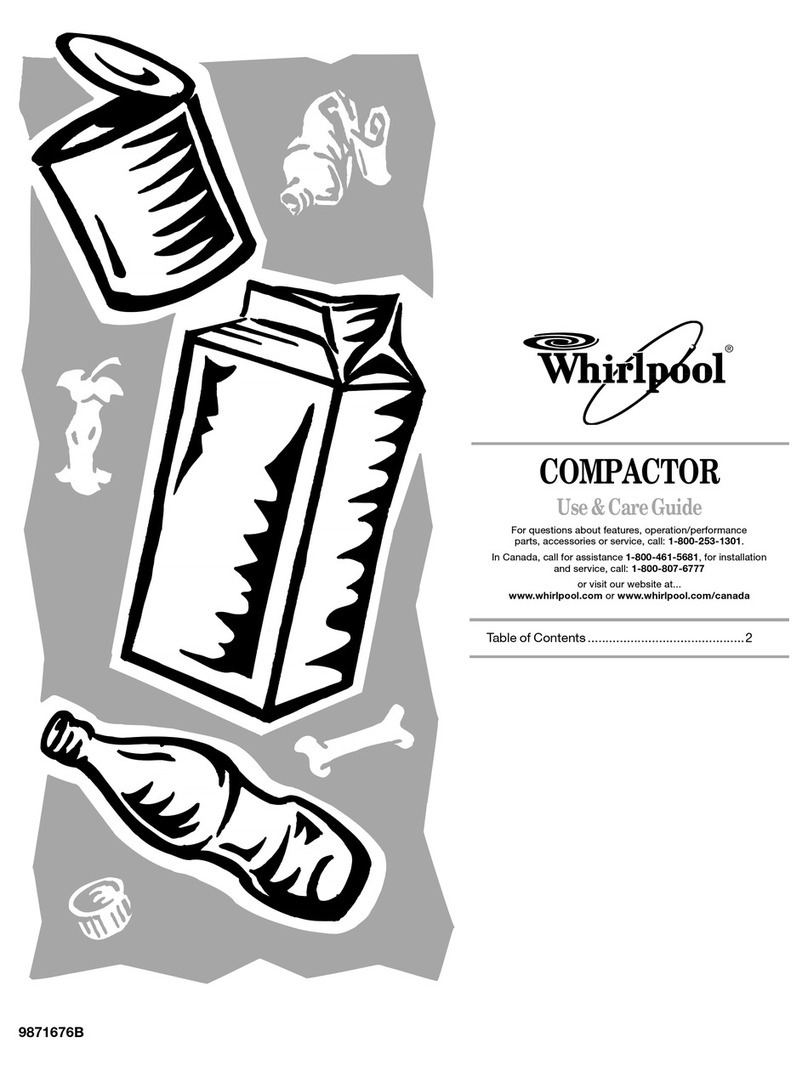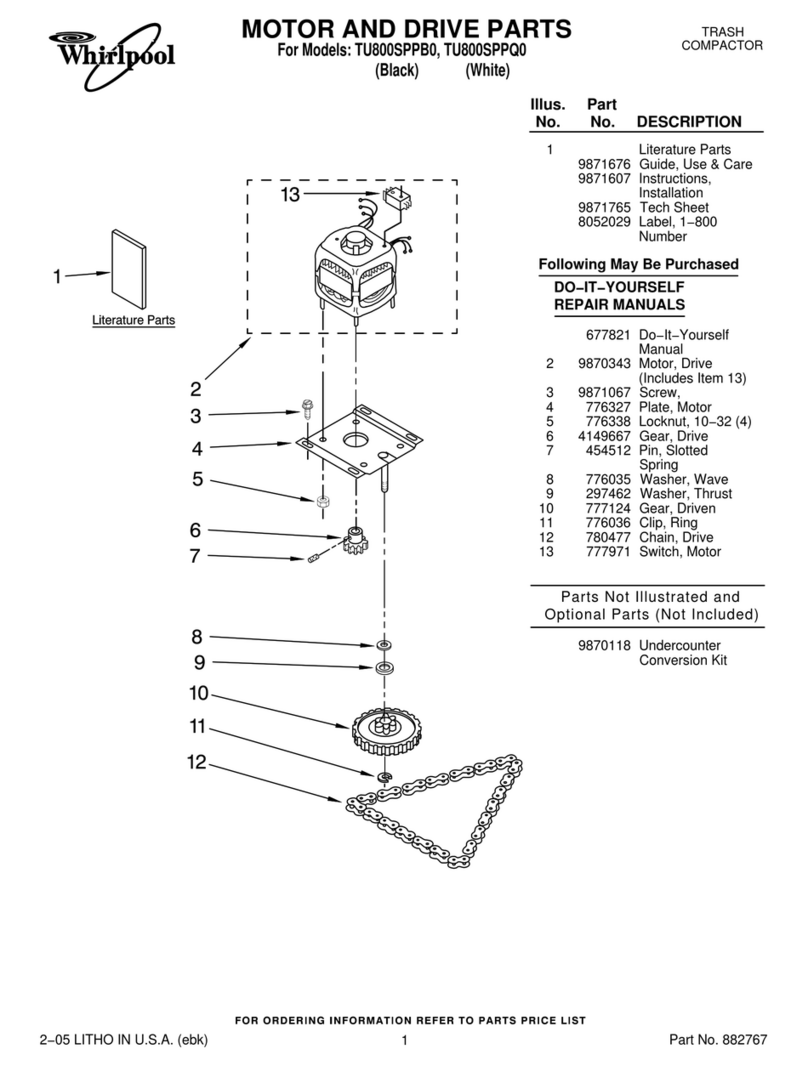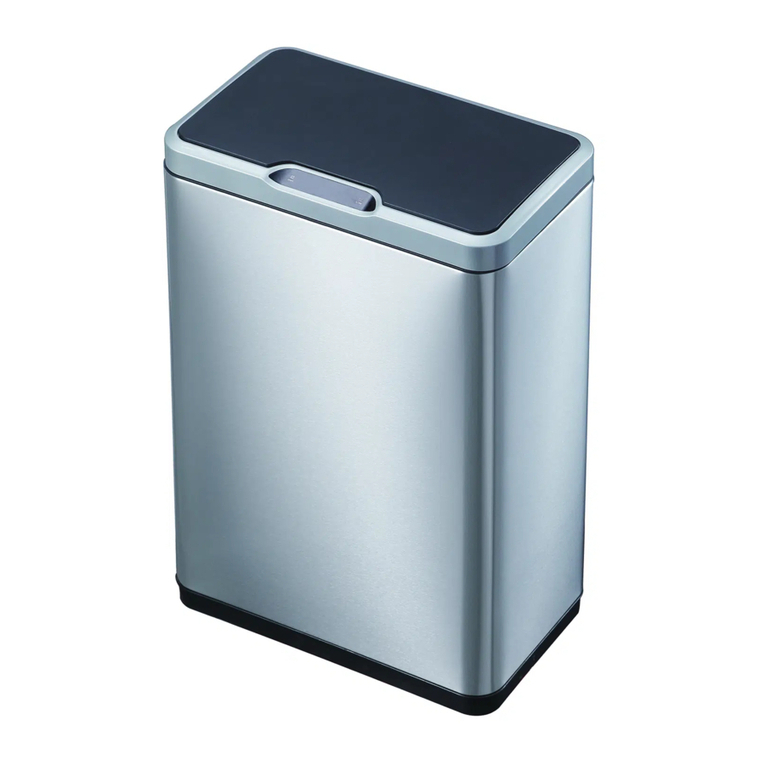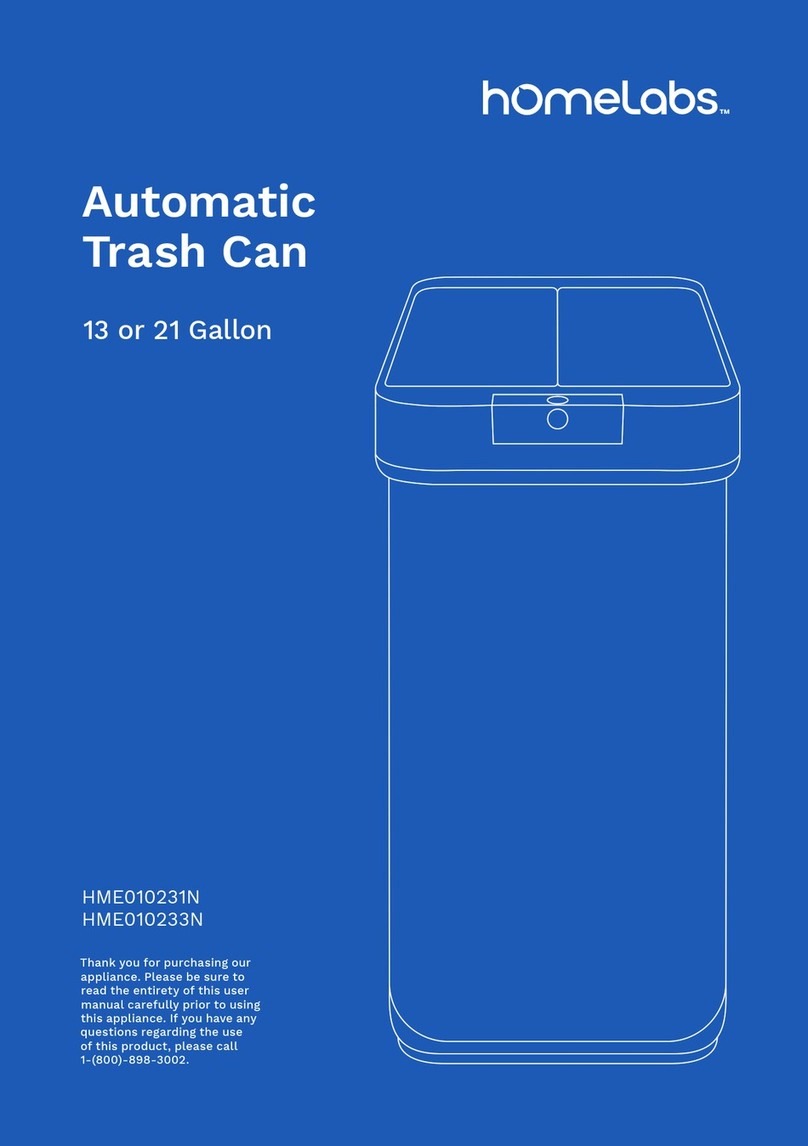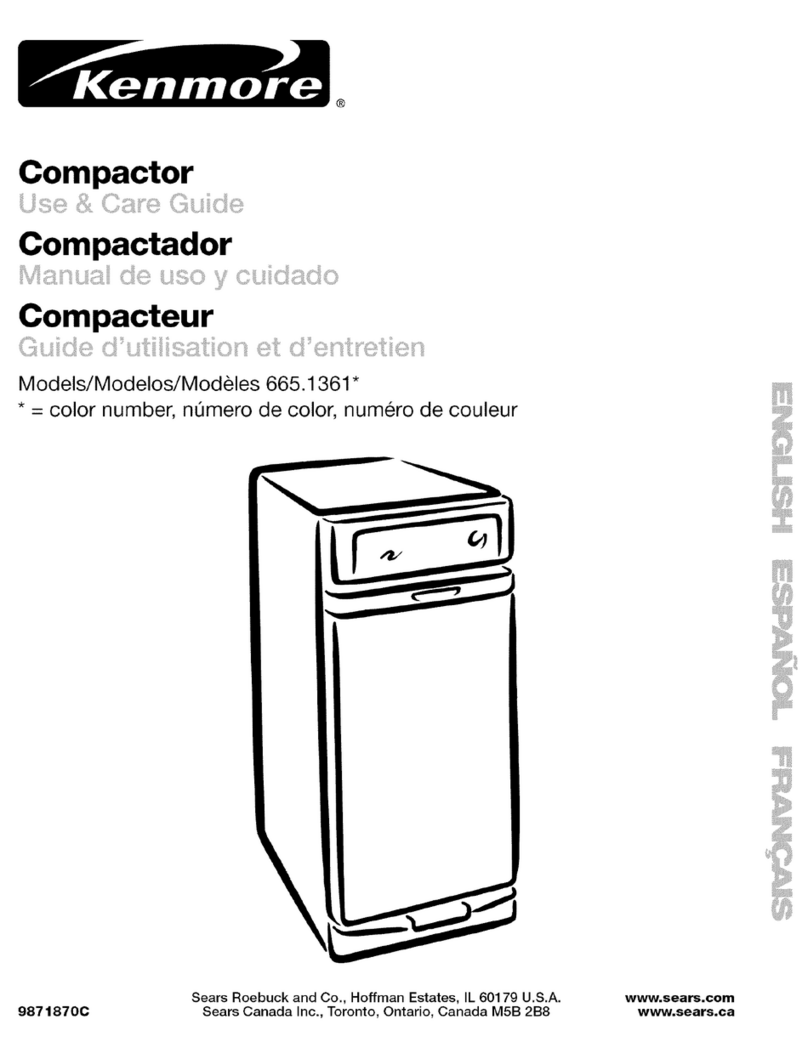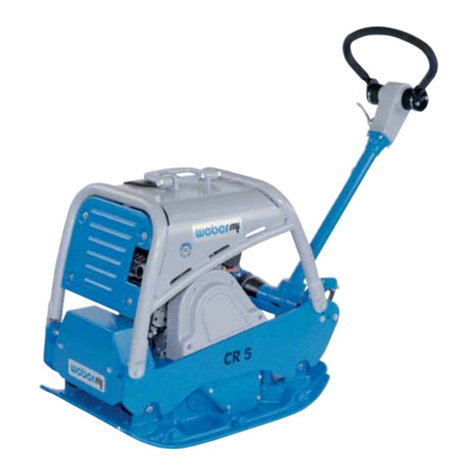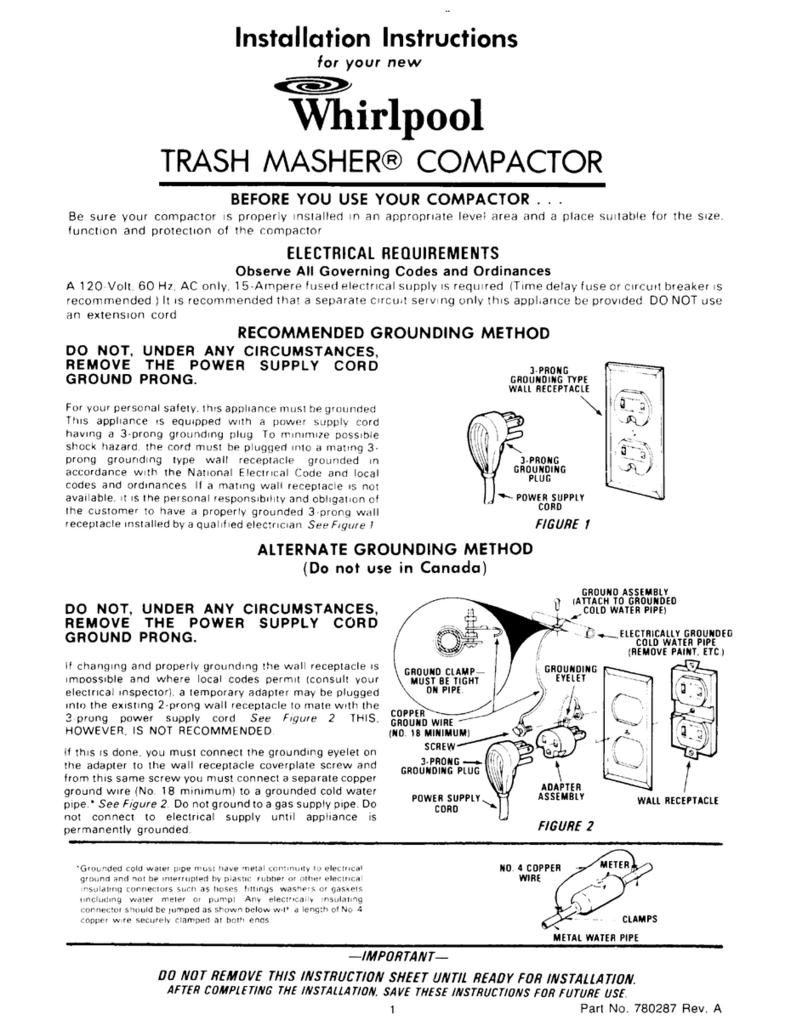
2
TABLE OF CONTENTS
COMPACTOR SAFETY.................................................................................... 2
INSTALLATION INSTRUCTIONS................................................................... 3
Unpacking ..........................................................................................................................3
Location Requirements ...............................................................................................4
Electrical Requirements ..............................................................................................4
Undercounter Installation..........................................................................................5
COMPACTOR USE .......................................................................................... 7
How Your Compactor Works....................................................................................7
Loading ................................................................................................................................7
Starting Your Compactor............................................................................................7
Using Solid (Locked) Cycle..........................................................................................7
Using the Air Filter..........................................................................................................8
Removing a Filled Bag..................................................................................................8
Installing a New Bag.....................................................................................................8
COMPACTOR CARE ....................................................................................... 9
Changing the Air Filter..................................................................................................9
Cleaning...............................................................................................................................9
TROUBLESHOOTING................................................................................... 10
WARRANTY...................................................................................................11
CONSUMER SERVICES ................................................................................12
GE SERVICE PROTECTION PLUS™ ............................................................13
CONSUMER PRODUCT OWNERSHIP REGISTRATION ...........................14
TABLE DES MATIÈRES
SÉCURITÉ DU COMPACTEUR .................................................................... 15
INSTRUCTIONS D’INSTALLATION ............................................................ 16
Déballage.........................................................................................................................16
Exigences d’emplacement .....................................................................................16
Spécifications électriques .......................................................................................17
Installation sous un comptoir ...............................................................................18
UTILISATION DU COMPACTEUR............................................................... 20
Fonctionnement du compacteur........................................................................20
Chargement ...................................................................................................................20
Mise en marche du compacteur.........................................................................20
Utilisation du programme Solid (compression solide)
(Verrouillé)........................................................................................................................20
Utilisation du filtre à air.............................................................................................21
Enlèvement d’un sac rempli...................................................................................21
Installation d’un nouveau sac...............................................................................21
ENTRETIEN DU COMPACTEUR.................................................................. 22
Changement du filtre à air......................................................................................22
Nettoyage .......................................................................................................................22
DÉPANNAGE ................................................................................................ 24
GARANTIE..................................................................................................... 25
SERVICE À LA CLIENTÉLE........................................................................... 26
SERVICE PROTECTION PLUS™ DE GE...................................................... 27
ENREGISTREMENT DU PROPRIÉTAIRE DE
PRODUIT AU CONOMMATEUR ................................................................. 28
COMPACTOR SAFETY
You can be killed or seriously injured if you don't immediately
You can be killed or seriously injured if you don't follow
All safety messages will tell you what the potential hazard is, tell you how to reduce the chance of injury, and tell you what can
happen if the instructions are not followed.
Your safety and the safety of others are very important.
We have provided many important safety messages in this manual and on your appliance. Always read and obey all safety
messages.
This is the safety alert symbol.
This symbol alerts you to potential hazards that can kill or hurt you and others.
All safety messages will follow the safety alert symbol and either the word “DANGER” or “WARNING.”
These words mean:
follow instructions.
instructions.
DANGER
WARNING

